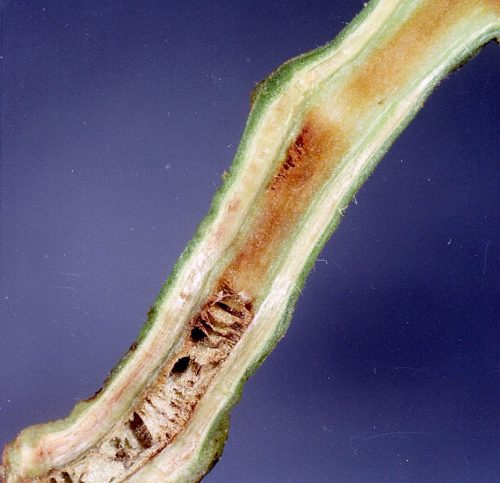Ralstonia solanacearum, this bacterium causes a wide range of symptoms.

Ralstonia solanacearum This bacterium causes a wide range of symptoms: wilting of the lower leaves and petioles; the wilt works its way up through the plant. Wilted leaves have yellow-colored, wedge-shaped spots or yellowed, dead leaf margins. Eventually the plant dies. White pus oozes from the cut stems. Ralstonia solanacearum usually enters the plant through a wound. Natural wounds (e.g., from cutting flowers) and unnatural wounds (from agricultural practices) are just as many entry points for R. solanacearum.
R. solanacearum has weeds as host plants, including bittersweet and nightshade. These plants are carriers of the bacteria without having symptoms of disease themselves.
R. solanacearum is a quarantine organism in Europe and considered a bioterrorist organism in the United States. That means controlling the infection to prevent further spread.
